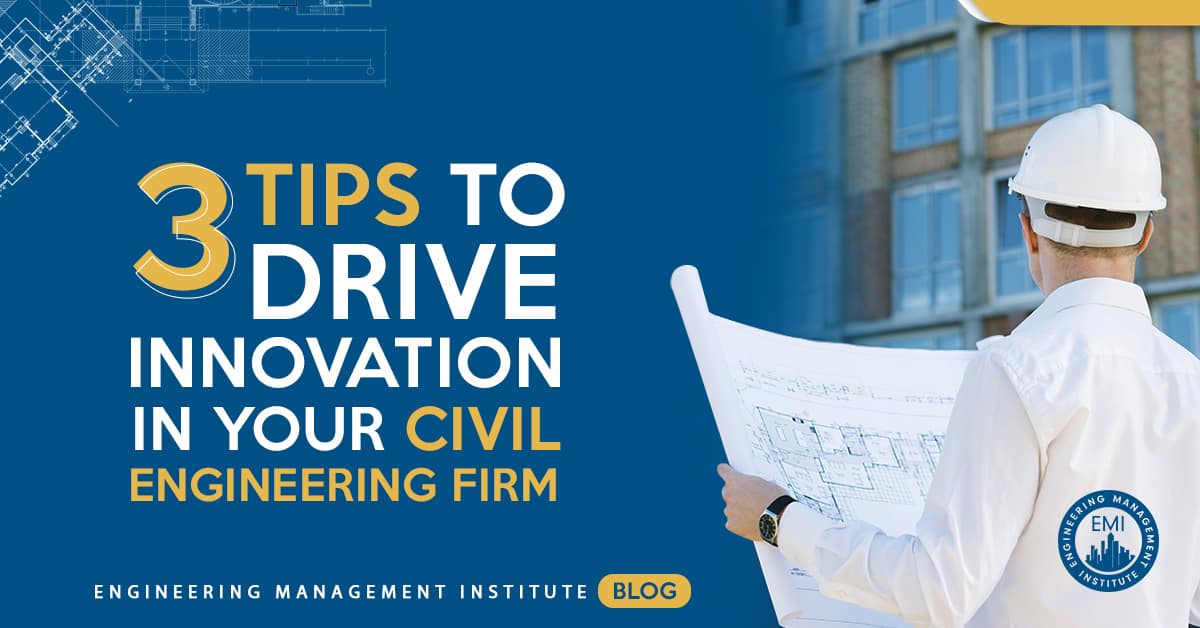This is a guest blog by Nick Heim, P.E.
As technology continues to move forward at a breakneck pace, so do the speed of civil engineering projects. Clients are expecting their consultants to complete projects faster today AND provide more value for the fee being paid. One of the ways that civil engineering firms can stay competitive is adaptation and use of technology in their daily processes and workflows. Today, I would like to share three tips on how my firm is driving innovation — and how yours can too:
1. Set Aside Time for Innovation
At THP Limited, we schedule monthly innovation meetings to discuss development of projects aimed at making our day-to-day tasks simpler and more efficient. Team members take turns sharing updates on their research/projects and provide each other with feedback throughout the development process. The last 15 minutes of the meeting is dedicated to bringing forth new ideas — no matter how wild or outrageous they may seem. Employees outside the innovation group are encouraged to bring forth ideas that can be pushed into the development pipeline. All this information is organized in a Trello Board that can be referenced or updated by a team member at any time.

By putting the meeting on our calendars, we are setting aside time to think about new and different ways of completing our daily tasks. Most of these projects require dedicated time outside of billable projects, and as such also require time to be built into the schedules of the engineers in the group. Without time specifically scheduled for this type of meeting and the required follow-up work, innovation may fall to the wayside as we become busy with project work. The key here is to get time onto calendars and into schedules so that staff can do innovative work without being overloaded.
2. Start With the Familiar
Implementing a new software or technology has the potential to drive large gains in productivity or allow a firm to add an entirely new service or level of service. From upfront costs to human nature, there are several obstacles to the implementation of anything brand-new. At THP Limited, we have developed several new processes, add-ons, and workflows through our innovation group that have benefitted the entire company — most of which are making use of existing software and technology.
A great example of enhancement of an in-place workflow is the development of the concrete construction field report (check out the article for an in-depth description!). In summary, we took an existing workflow and made it more efficient through use of in-place software that most of the staff was familiar with (see pictures below).

Don’t let the upfront cost in both money and time deter you from innovating within your firm — start with the familiar and build from there!
3. Fail Forward — Persistently
An observation I have made in my young career as a civil engineer is that we as engineers have a large aversion to failure, and a low tolerance for risk. This makes sense — failure is not an option for our designs that many people rely on to keep them safe in their everyday lives. Unfortunately, we carry this into attitude into other areas of our Civil Engineering businesses.
When it comes to innovating, “failure” is a requirement to eventually succeed. I’ll emphasize the quotation marks around failure, as what I am talking about is not a binary outcome — it is calculated risk-taking within a firm’s level of comfort. Let’s examine an example I have encountered a few variations of:
Engineer: Can we purchase this camera to test out a new piece of software that I think would make our field operations more efficient?
Team Lead: How can we know that this will make our field operations more efficient? I don’t want to spend money on a product until I know that it will give us useful results.
Engineer: We won’t know until we purchase the camera and test the software. Even if the software doesn’t end up working out, we have other uses for the camera.
Team Lead: OK. I will need to discuss this further with other stakeholders.
…and repeat.
As engineers, we often don’t want to spend time or money (particularly the latter) on something until we know it is a “sure thing.” To push the envelope and really innovate, however, testing, failure, and refinement are required. If something is a “sure thing” — then it isn’t innovation!
For the decision decision-makers, don’t be afraid to spend time and money to innovate. Think of the purchases as calculated risks and investments — some will flop, but others will hit the mark and can make you back multiples of what was spent on the failures! And of those that flop, you will learn something useful that can be put into practice in the future — “failing forward”!
For the innovators, be persistent. We as engineers are generally conservative and will likely need time to come around. The above scenario was actually resolved through persistence and would have fallen to the wayside without it!
In summary:
- Make time for innovation. If you do not, it will not happen.
- Be innovative with what you already have. Implementation of new is more challenging than improvement of existing.
- Be persistent — innovation takes time. Learn from your mistakes on the winding path to success.
About the Author, Nick Heim, P.E.

I hope you enjoyed this week’s post by guest author Nick Heim, P.E. If you’re interested in your firm possibly joining the Civil Engineering Collective, please contact us here or call us at 800-920-4007.
I hope you’ll join us.
Anthony Fasano, P.E.
Engineering Management Institute
Author of Engineer Your Own Success








